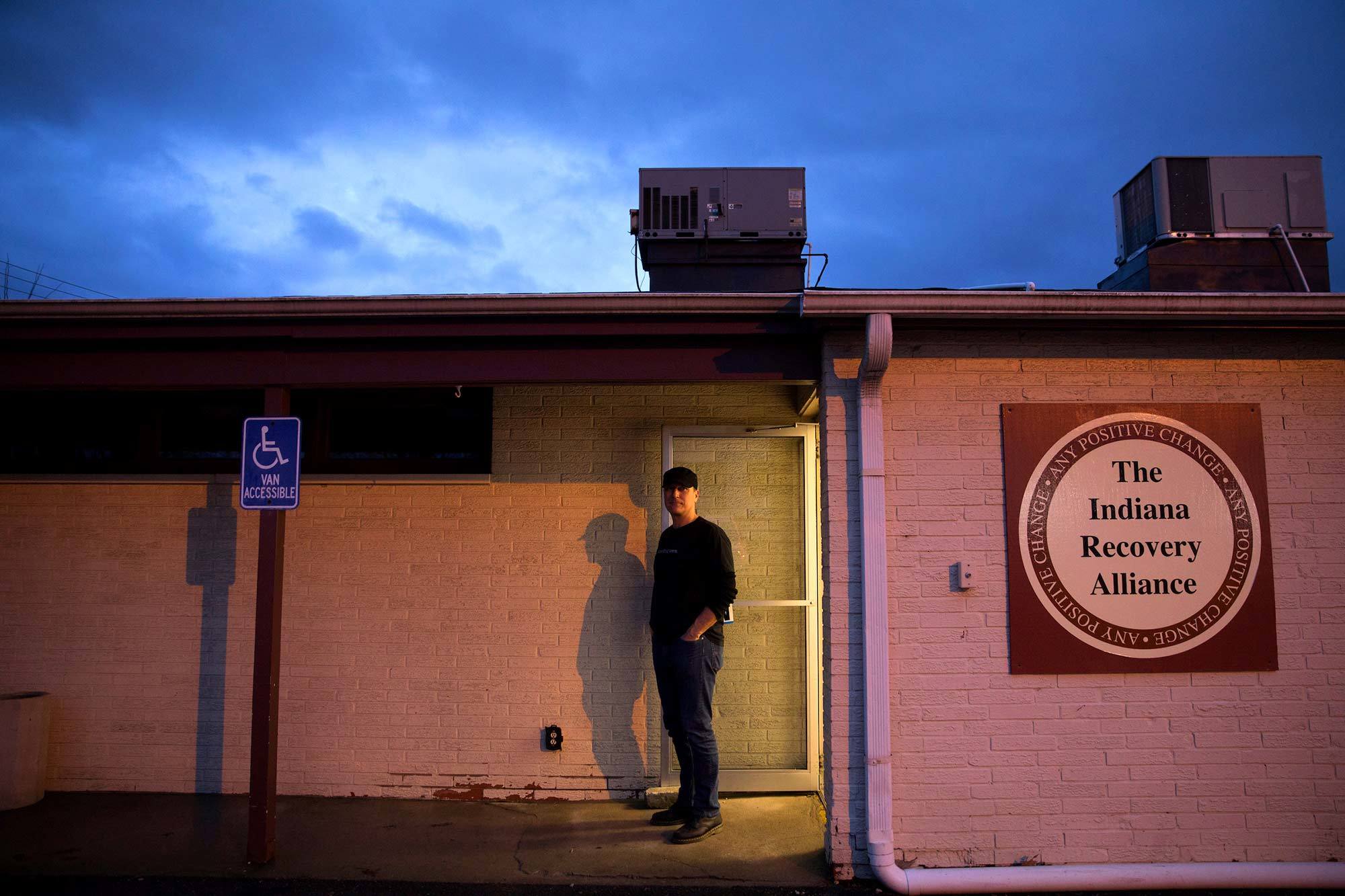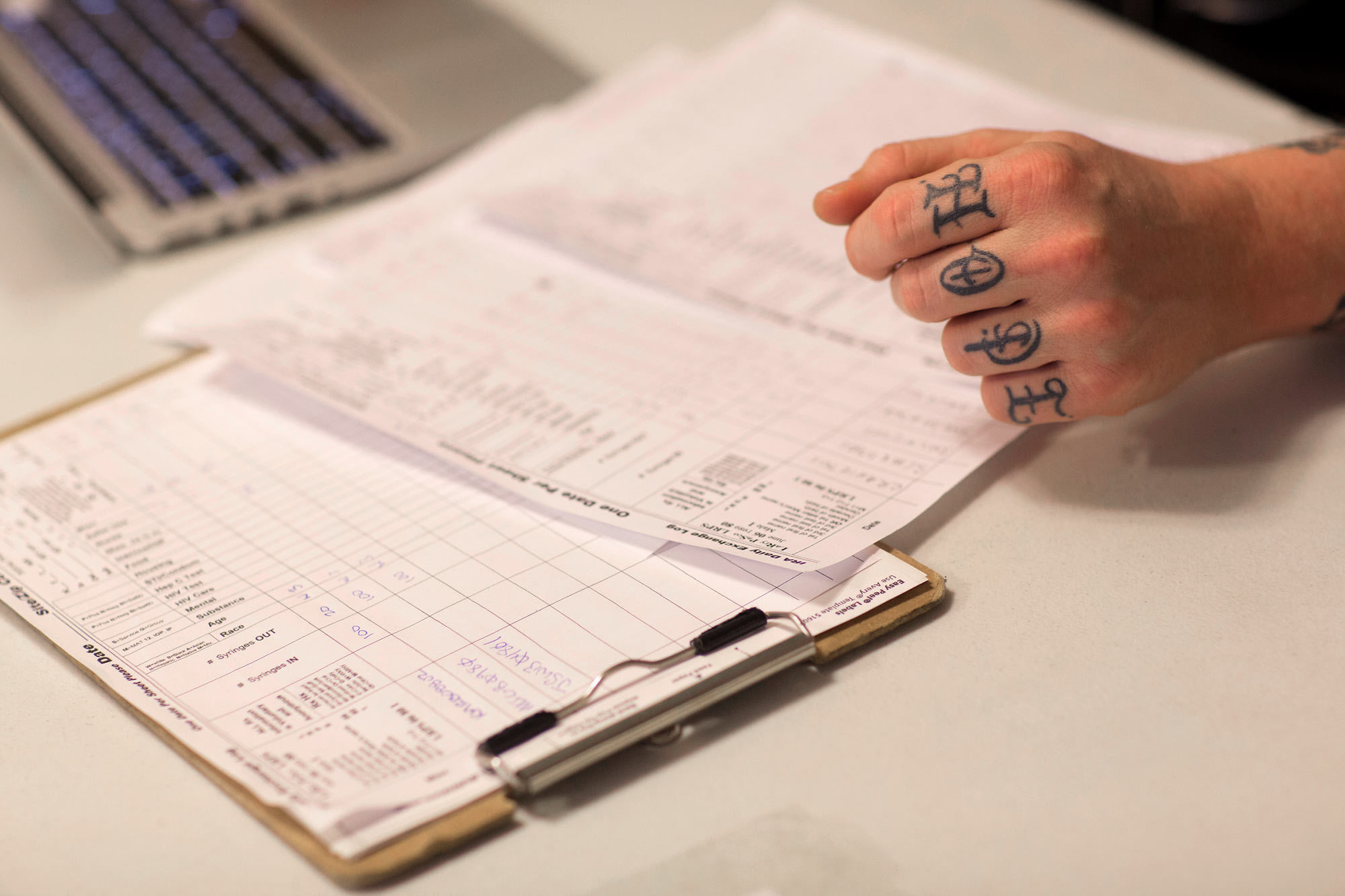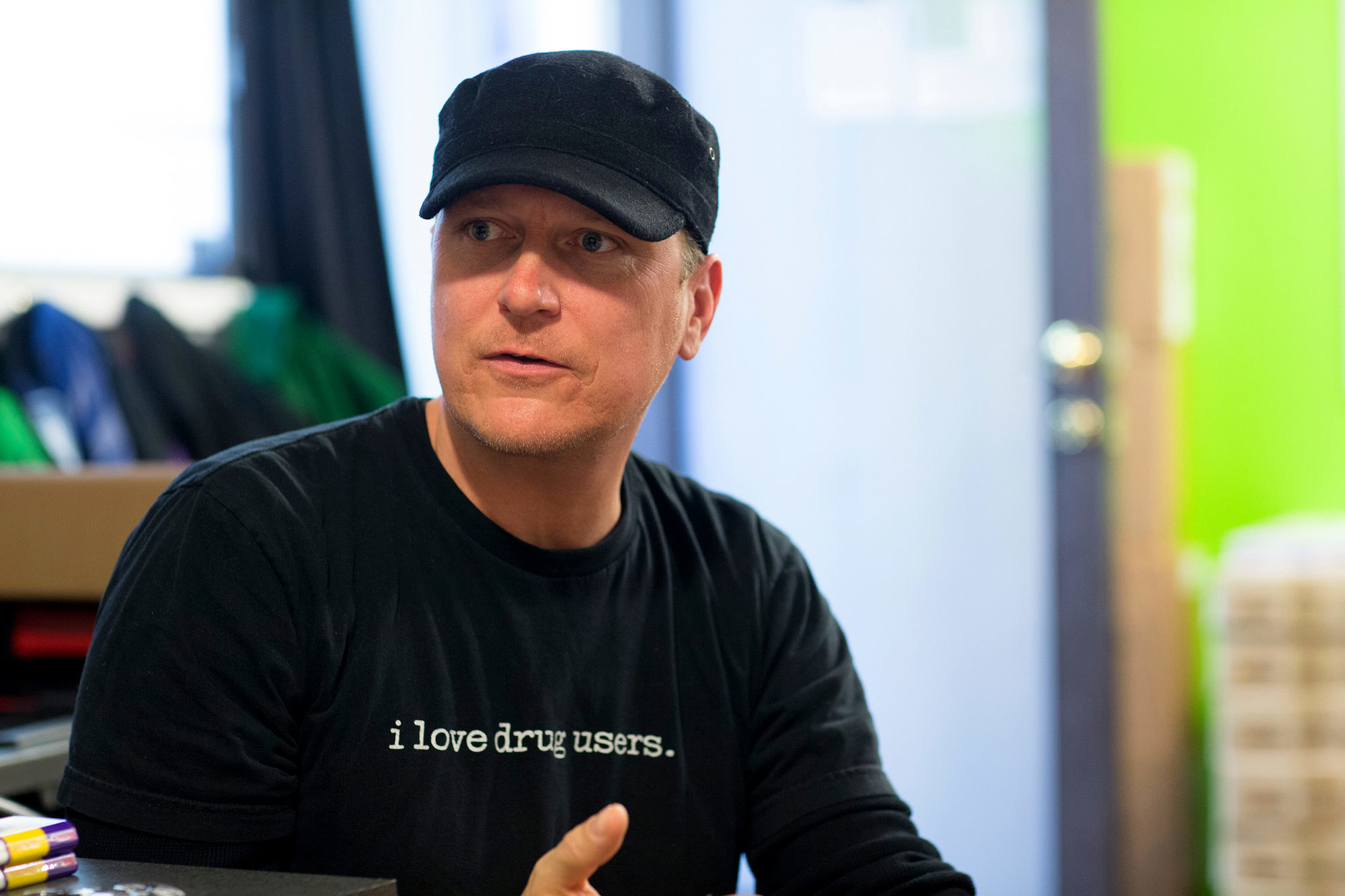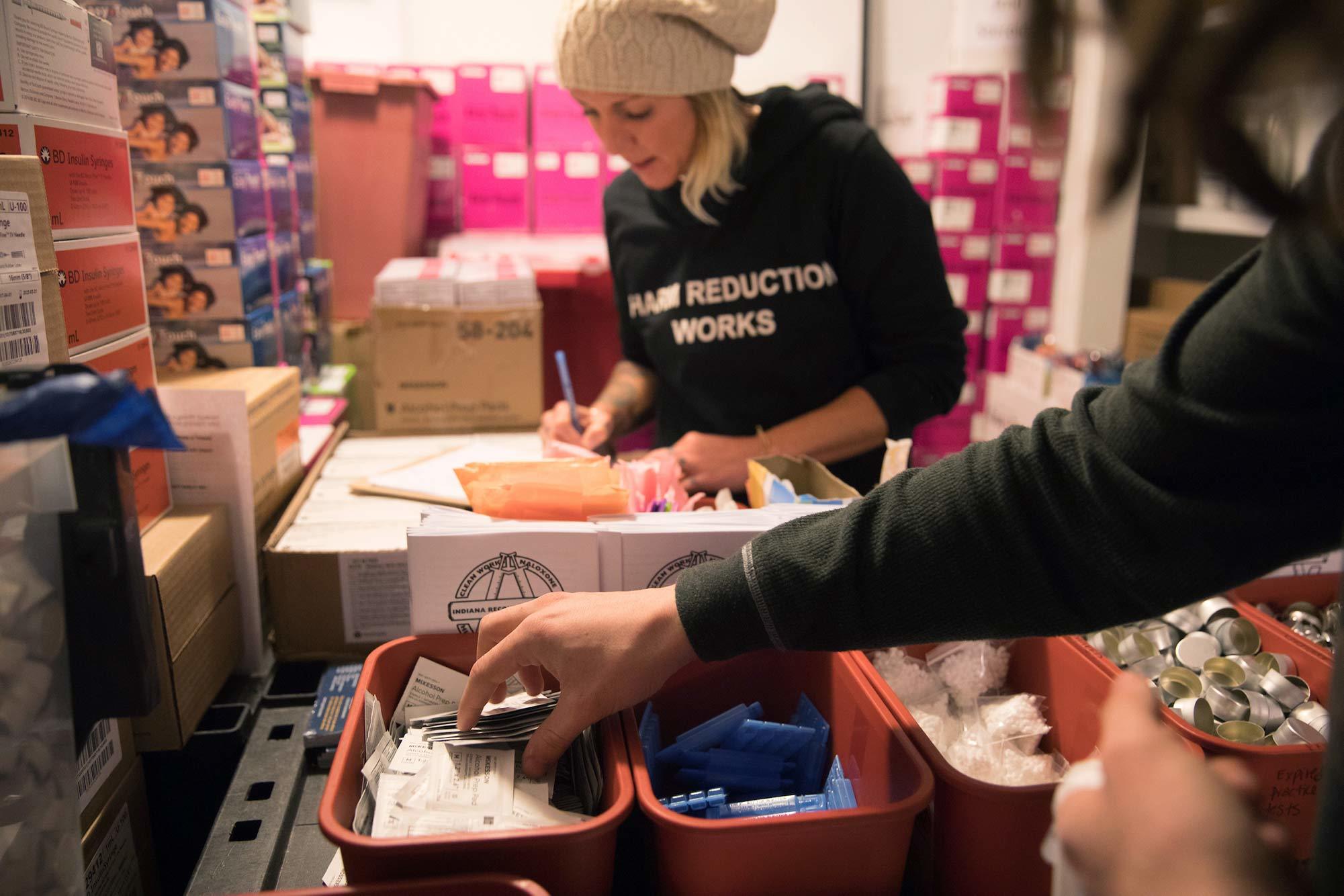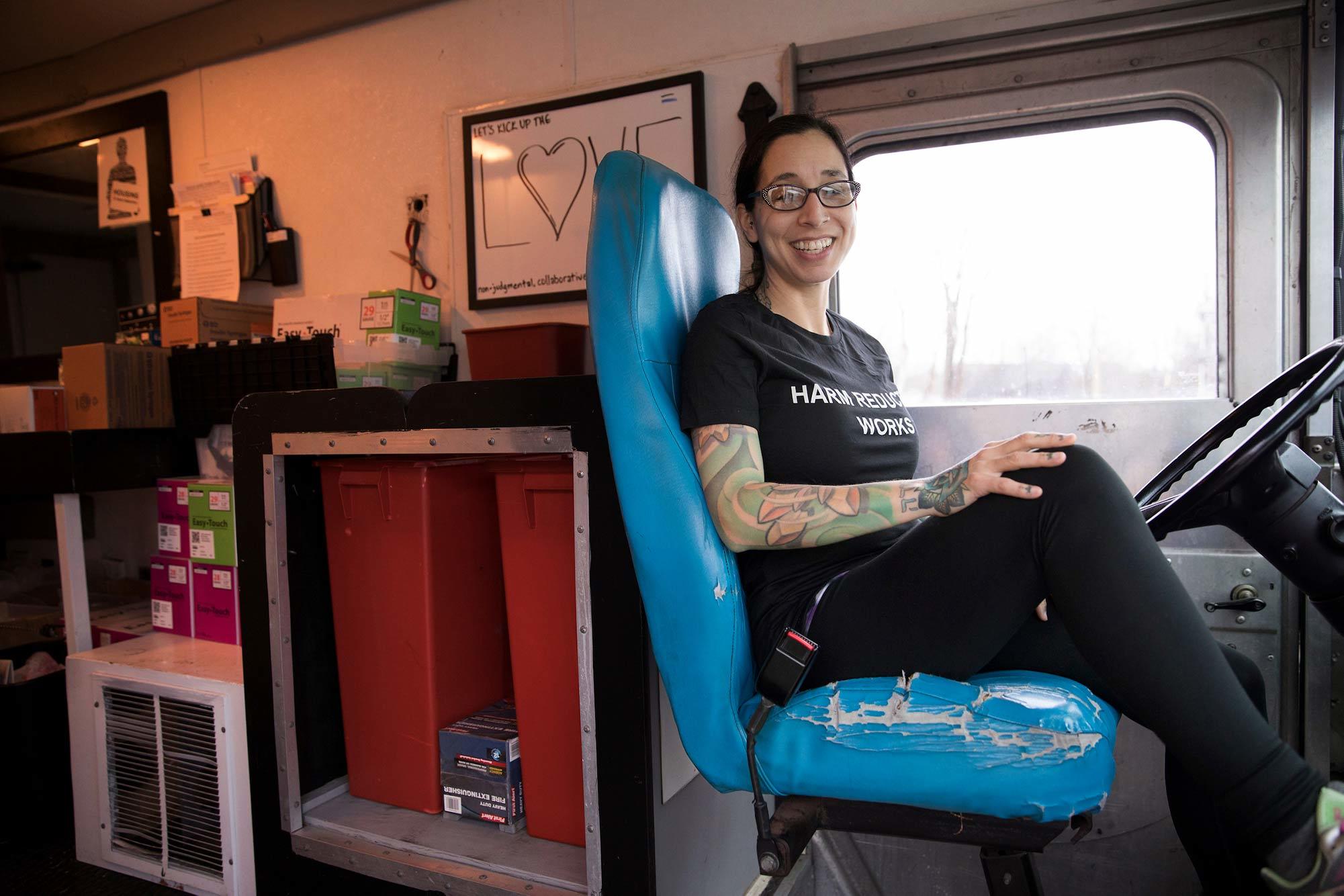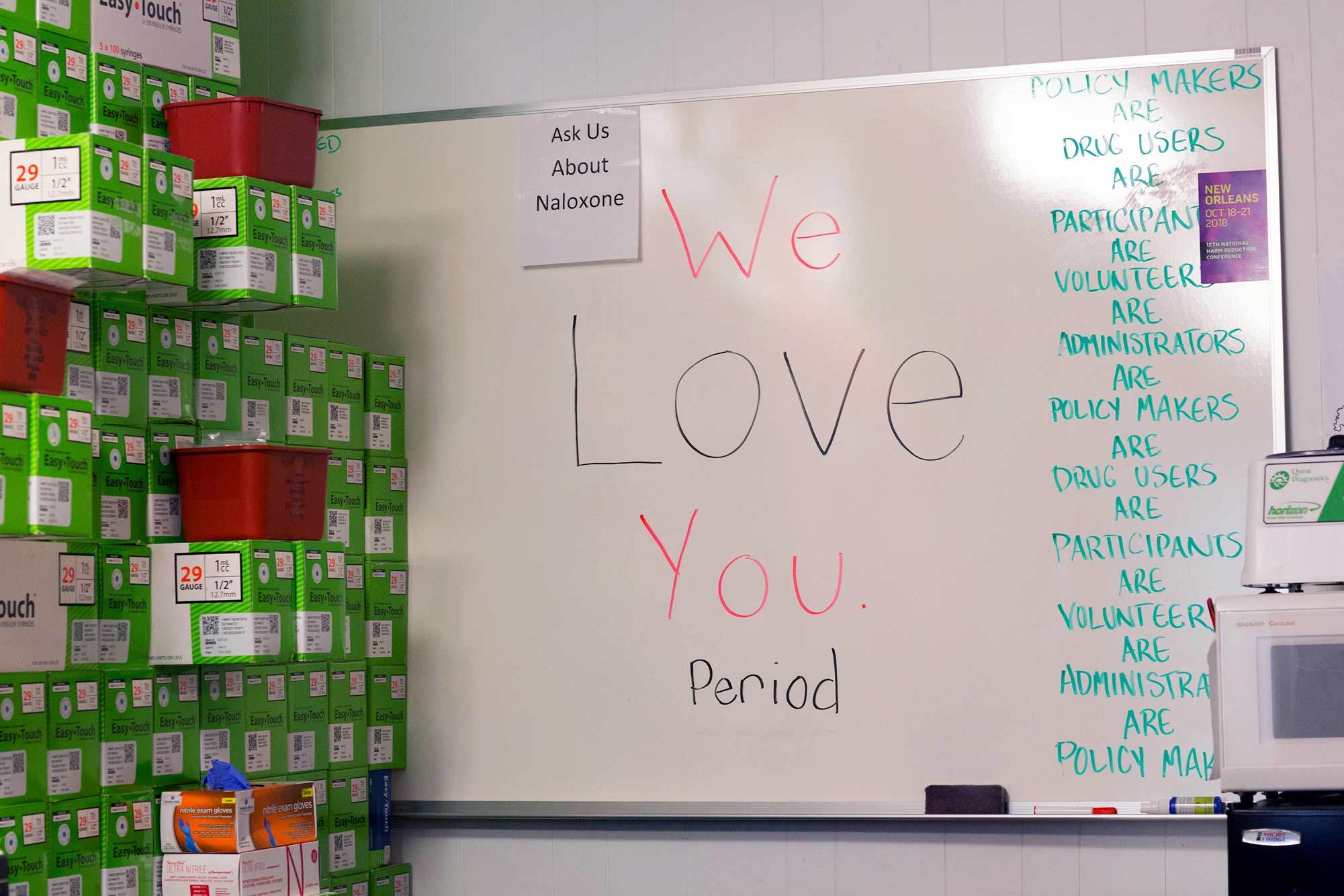Opioid overdose deaths in the United States were five times higher in 2016 than in 2000.
In the winter of 2014, Chris Abert and a few friends began riding their bikes around Bloomington, Indiana, offering jackets, hot coffee and friendship to people who were homeless. Their outreach focused on building relationships and sought to give a voice to underserved members of the community. Almost immediately, people said they needed clean syringes and ways to reverse overdoses.
“It is legal for pharmacies in Indiana to sell syringes to anyone who asks, but the vast majority refuse.”—Chris Abert, Indiana Recovery Alliance, Founder
In January 2015, health officials recognized an outbreak of HIV, the virus that causes AIDS, in southeastern Indiana. More than 200 people were infected with HIV during the outbreak, which was largely in Austin, a town with less than 4,200 people. The outbreak was later linked to intravenous use of a prescription opioid and believed to be spread by sharing infected needles.
“Before they had syringe exchange you’d have to share needles. People would pay 5 bucks for a clean syringe and 3 for a used syringe. We’d use old ones over and over.”—IRA Member, Man in Recovery
In March 2015, Indiana Governor Mike Pence declared a public health emergency and temporarily authorized Scott County, the center of Indiana’s HIV epidemic, to start a syringe service program. The state legislature followed, passing a law allowing counties across the state to request permission to start programs. Abert began planning and making connections to form a syringe service and build an overdose prevention network. In December 2015, Monroe County obtained permission to start a syringe service program.
There is compelling evidence that increasing the availability and utilization of sterile injecting equipment by IDUs [intravenous drug users] reduces HIV infection substantially. World Health Organization
In addition to HIV, steep increases in deadly hepatitis C infections are likely associated with opioid injections. Testing people who inject drugs, treating those who test positive and preventing new transmissions saves lives. Centers for Disease Control and Prevention
Syringe programs save health care dollars by preventing infections. The estimated lifetime cost of treating one person living with HIV is more than $400,000. Centers for Disease Control and Prevention
On Valentine’s Day 2016, Abert officially launched the Indiana Recovery Alliance Syringe Service Program, in partnership with Monroe County, to provide sterile injection equipment and overdose reversal medication to residents. The IRA follows best practices and does not limit the type and number of supplies members can take.
“Before [the Indiana Recovery Alliance] was here, it was a mess. People I knew were getting infections, staph, MRSA, all kinds of stuff.”—IRA Member, Young Woman
“We are connecting people with infectious disease to services and stopping fatal overdoses. There is no other approach that is more effective or has more data to support it.”—Abert
By 2018, the Indiana Recovery Alliance had gone from riding bikes and paying out of pocket to be the largest syringe service and overdose protection program in Indiana. The alliance focuses on helping people help each other and its hours and operations are driven by members’ needs and schedules.
The Indiana Recovery Alliance provides community members with free supplies of naloxone, a medication used to block the effects of opioids, especially in overdose. Members also pick up clean syringes and drop off used syringes for safe disposal. IRA peer trainers, who educate people on how to use naloxone, take supplies to hand out.
The opioid crisis affects people of all ages, incomes, ethnicities and occupations. While the majority of overdoses occurred in people between the ages of 25 and 54, the range of recorded deaths in Indiana in 2016 included people less than a year old and more than 85 years old. Monroe County
Overdoses, fueled by opioids, are the leading cause of death for Americans under 50 years old — killing roughly 64,000 people last year, more than guns or car accidents, and doing so at a pace faster than the HIV epidemic did at its peak. The New York Times
According to Abert, many people do not call 911 or seek medical attention for fear of stigma and recrimination, which makes a significant number of first responders in the opioid crisis drug users or their friends and family. By distributing naloxone, the Indiana Recovery Alliance has empowered community members to facilitate more than 1,800 opiate overdose reversals in Indiana since 2015.
At the root of the Indiana Recovery Alliance’s effectiveness is its caring, compassionate, member-centered approach. Nearly all of IRA’s staff, board and volunteers have lived experience with drugs or drug users. The alliance provides a stigma-free environment in which contributors recognize members as having identities other than drug users.
“I was an addict that hid for a long time and didn’t want to come out with it, but this made it a lot easier. They are here to help.”—IRA Member, Young Woman
“This is the one place people don’t have to be ashamed and can continue to show up without fear of judgement.”—Abert
The alliance creates space for people who have been alienated and disenfranchised to be meaningfully involved in their communities, despite drug use that would typically bar them. It offers ways for people to join together and learn about disease prevention and public health.
“We empower people to train others, so they can become volunteers in their own communities, advocate for themselves and fulfill the basic human need of helping others.”—Abert
Addressing harm reduction holistically is fundamental to the Indiana Recovery Alliance’s success. The alliance partners with organizations offering complimentary services and connects members to essential services including foodbanks, housing and temporary shelter. It is building the Indiana Harm Reduction Coalition and advocating for implementation of harm reduction interventions, public health strategies, drug policy transformation and justice reform in Indiana and surrounding states.
The Indiana Harm Reduction Coalition defines harm reduction as a set of practical strategies, from safer or managed use to abstinence, aimed at reducing negative consequences associated with drug use. It asserts that harm reduction is a movement for social justice grounded in the belief that all people have rights, regardless of drug use, and that the conditions surrounding drug use need to be addressed along with use itself.
In addition to providing services and leading the Indiana Harm Reduction Coalition, the Indiana Recovery Alliance organizes trainings, vigils, marches and forums. The Comer Family Foundation provides grants to the alliance and other syringe service programs that are improving the health and wellness of people affected by drug use. Now, in its third year, the Indiana Recovery Alliance is working to expand its funding sources to meet the growing demand for member-centered harm reduction services.
“We connect with people no matter where they are and let them know that they are loved no matter what kinds of drugs they do or do not use.”—Abert
